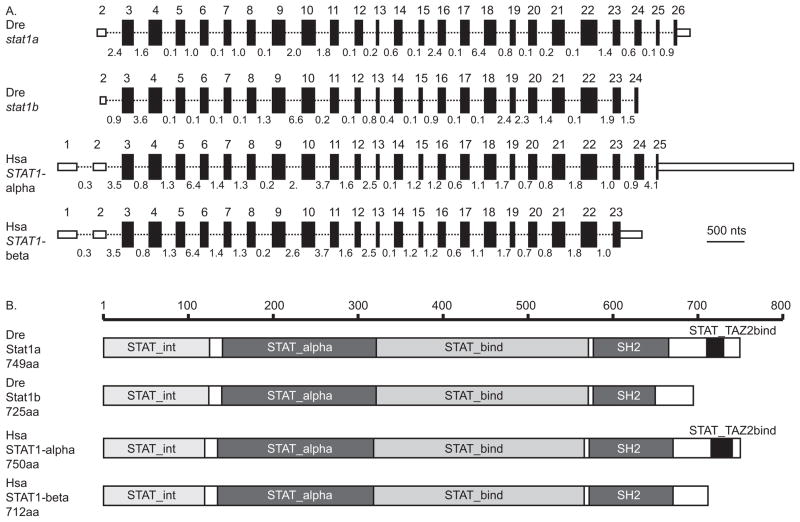Figure 1.
A comparison of zebrafish and human STAT1-related genes and proteins. A. The structure of STAT1-related genes. Exons are represented as boxes; small, unfilled boxes represent 3′ and 5′ UTRs and filled boxes represent translated regions. The length of each box is proportional to the length of each exon. Introns are represented as thin dotted lines connecting boxes; the length of each intron is indicated in kilobases but introns are not drawn to scale. B. The structure of STAT1-related proteins. Domains that characterize STAT proteins are marked on diagrams representing lengths in amino acid residues according to the scale bar for proteins encoded by the two zebrafish genes stat1a and stat1b and the two human STAT1 splicing isoforms STAT1-alpha and STAT1-beta. White boxes represent linker regions between domains. The human STAT1-alpha splice form and the zebrafish Stat1a protein possess a trans-activation domain lacking from the human STAT1-beta splice form and the zebrafish Stat1b protein. This trans-activation domain is approximately 20 amino acids long and it binds selectively to the TAZ2 domain of CREB-binding protein to act as a transcriptional activator. Abbreviations: Dre, Danio rerio; Hsa, Homo sapiens; SH2, Src homology-2 domain; STAT_alpha, alpha helical, coiled-coil domain; STAT_bind, DNA binding domain; STAT_int, STAT dimer interaction stabilization domain; STAT_TAZ2bind, trans-activation domain.

